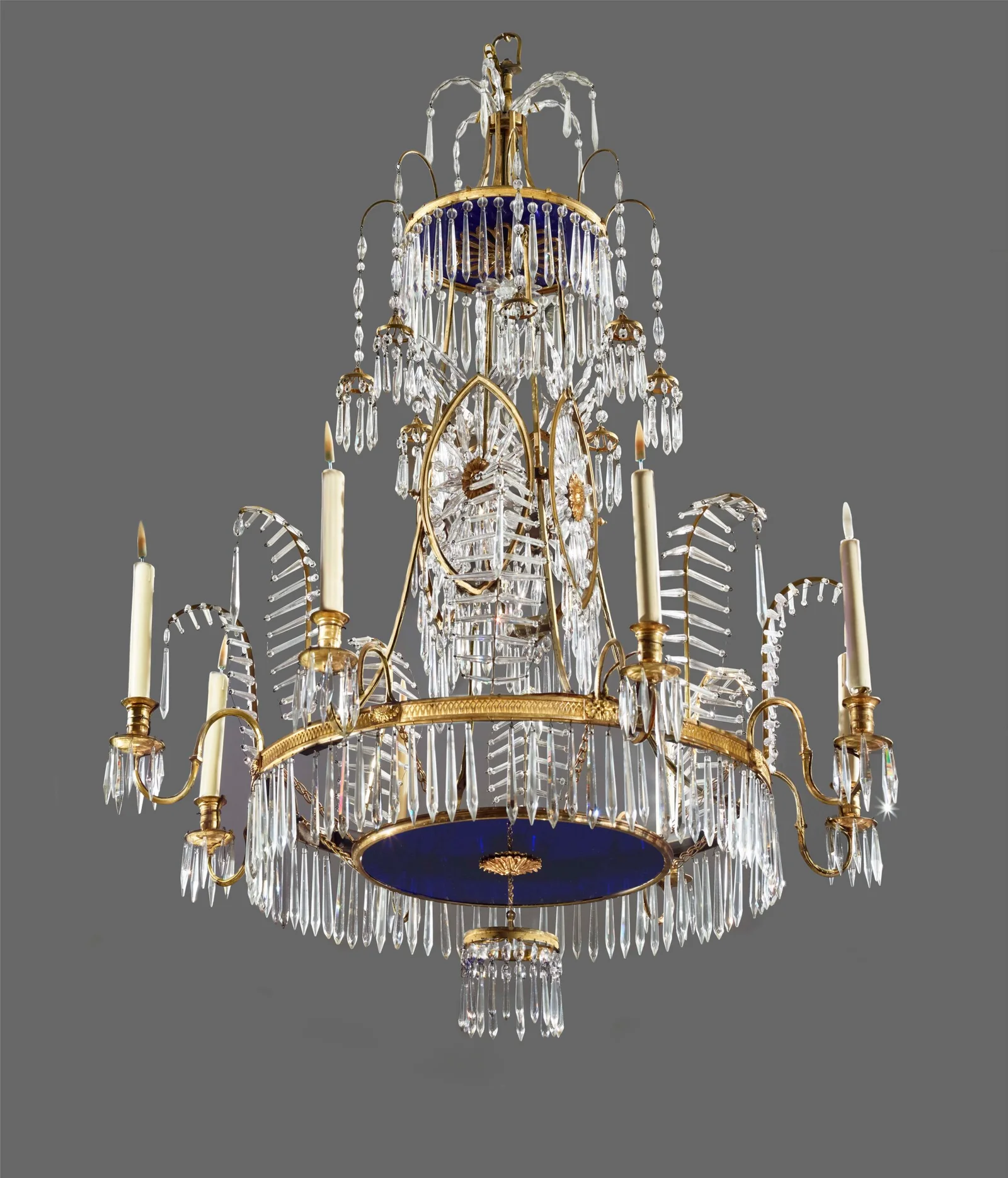Russia, end of the 18th century
Blue glass, crystal, chased and gilt bronze
Close example:
- Gilt bronze, cut glass, blue glass chandelier, circa 1790, Sweden, private collection
It features two blue glass trays. The upper plate is surmounted and surrounded by cut crystals and falling pendants. The two trays are connected by branches, which has between each, patterns of ovoid shape with in the center, rosettes and crystals. From the lower crown, spurt eight light arms between which are interposed fern leaf patterns.
The elaboration of the crystal
The discovery of the crystal dates back to the 17th century in England when the British Admiralty decided to prohibit the use of wood as fuel in order to produce the masts of the ships it needed.
The glassmakers then turned to other sources of energy such as the recently discovered coal, and in 1675, in order to accelerate the fusion, lead oxide was added to the composition. To their surprise, the glassmakers then found that, thanks to this metallic oxide, they obtained a glass with exceptional luster and sound.
Soon, other countries such as Bohemia, France, Sweden, Belgium and Sweden tried to develop a glass with comparable qualities.
It was probably as early as 1683 that the master glassmaker Michael Müller developed the Bohemian crystal with the addition of potash, lime and manganese oxide, hardness and shine Crystal – capable of being cut like a gemstone.
The cut crystal
If in ancient times the Egyptians had already applied to the glass the techniques of lapidaries, the glass had appeared to them from that time very close to precious stones. The renovation of this technique is linked to the imperial court of Rodolphe II, emperor of the Habsburg dynasty, who ruled between the end of the 16th and the beginning of the 17thcentury. The emperor was a great lover of arts, so that many stonemasons, notably rock-crystal, abounding in Bohemia, worked for him in the capital of the Empire, the city of Prague, where he resided. These craftsmen thus applied their techniques to the newly developed crystal.
As early as the 17th century, the volume of imports of tableware and ornamentation was very important, to which was added crystal and jewelry.
This chandelier seems to be close to the work of Johann Zech, Bohemian-born artist, who had settled in Saint Petersburg and delivered many chandeliers for the Russian imperial palaces.
Bibliography
- R. Barois, J. Mouclier, Le cristal, Paris, Éditions Armand Colin, 1994.
- Jonathan Bourne, L’art du luminaire, Paris, Éditions Flammarion, 1992.
- K.A. Solovre, Russian Lighting 18th-19th Century, Moscow, State Publishing House, 1950.
Measurements:
- Height: 135 cm – 53 inches
- Diameter: 115 cm – 45 45 ½ inches
